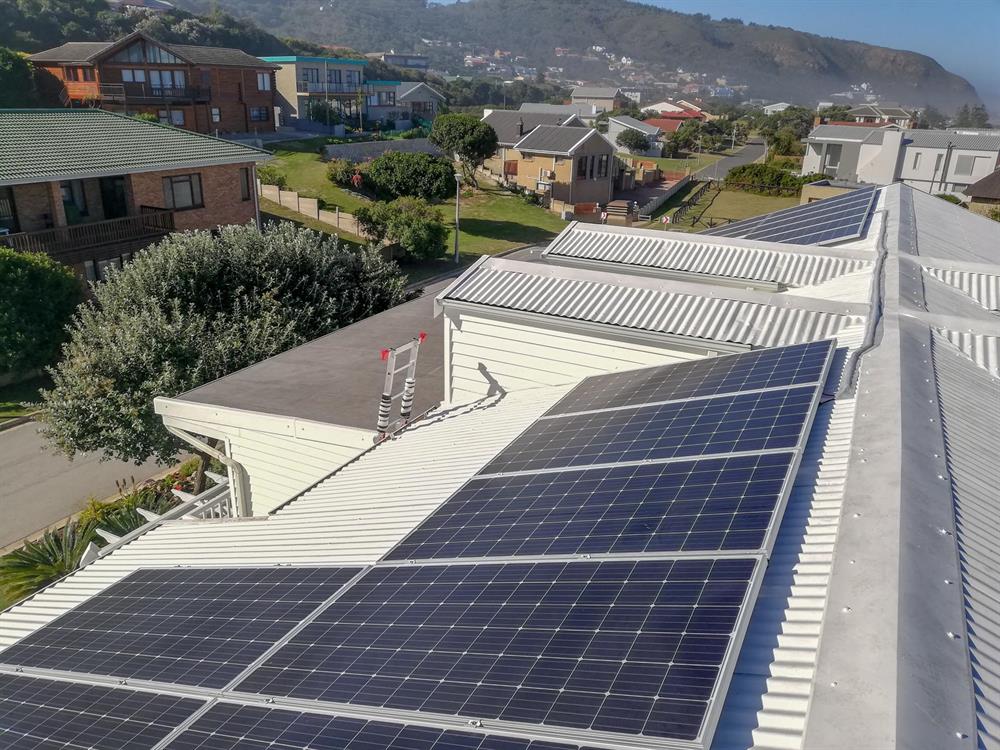KAROO NEWS - An increasing number of fed-up homeowners are opting for solar energy supply systems to shield themselves from the nasty surprises that Eskom deals out every so often with its unpredictable load shedding episodes.
But what will it cost a homeowner to give the plundered-to-debt-ridden electricity provider the boot?
Specialised Solar Systems general manager Ryan Oliver in George says they rarely install a system that is completely off the grid because of the expense of having much more battery storage, which is the most expensive component of a solar- powered system.
The majority of people opt for a hybrid system which allows them to fall back on Eskom's supply in certain instances.
Three basic components
The three basic components of a solar powered system are the solar panels, the batteries in which to store energy from the panels, and an inverter that converts the energy generated by the panels into electricity that is suitable for the electricity grid of your home. During the day, power is used directly from the panels. Surplus energy is stored in the batteries.
Also remember that on cloudy days the panels generate less energy, but you are able to monitor levels thanks to a high-tech monitoring system that is part of the package.
Affordable hybrid system asks you to adapt
Oliver says the average homeowner deciding on an affordable solar-powered system needs to be realistic about the implications it will have on their energy consumption habits. You must be willing to go without some non-essentials when Eskom fails, except if you have a generator that can keep the non-essentials going.
The hybrid system's inverter has two outputs - one for essentials (lighting, fridge, television and security) and the other for non-essentials (tumble drier, washing machine, dishwasher, iron, etc).
At least you know that when Eskom fails, the essentials will keep running.
Halving your demand
According to Eskom, the average South African household uses about 30kWh of electricity per day. Opting for solar generation within a reasonable budget will require you to change to a gas or solar geyser, and change the stovetop to gas (and also the oven, if you bake a lot).
Since cooking is done mostly before sunrise and after sunset, you would not tap into the batteries' power supply, otherwise your battery storage demand will increase (making the system more expensive).
Changing the geyser and stovetop halves the usage to 10 - 15kWh per day, according to Oliver.
This level of consumption needs a smaller solar-powered system, which is more affordable for the average household.
Solar geyser
Keep in mind that a solar geyser has a smaller element and takes longer to heat up. It is run directly from the panels during the day. A solar geyser is a separate installation from the solar-powered system and extra panels must be fitted to power it.
If you do not shower during the day when the water is hot, the geyser can be set so that it reverts to Eskom supply when reaching a certain minimum temperature.
Price comparison
The difference in price between a hybrid and totally off-grid system is huge because you need much more battery storage when you go completely independent from Eskom. A hybrid system for an average household costs between R140 000
and R150 000 while the same house-hold will cough up R250 000 to go off the grid. (These prices do not include a solar or gas geyser.)
Banks provide financing for these systems and the homeowner can use the saving in their electricity account to help pay off the investment.
The system should last you a long time: the batteries between 15 and 20 years and the inverter has a five-year guarantee but should last much longer.
A set of decent panels will start losing generating capacity, but even after 25 years, they should still generate 80% of their original output.
Farmers, who pay a huge availability charge to Eskom, will benefit from the off-grid system as they can use the Eskom fee to finance their solar-powered system.
Quality
There are varying quality levels in solar-powered systems and Oliver advises that homeowners do their homework well before choosing a supplier and installer.
"Do not go for the cheapest quotation. You want a system with components that will last a long time because it is a big investment. Make sure you are working with a reputable supplier and look at the guarantees supplied. However, do not always trust only the guarantee - some companies install cheap components, requiring replacement not far down the line, to make extra money," warns Oliver.
 Reducing dependence on Eskom. More homeowners are turning to solar energy. Photo: Specialized Solar Systems
Reducing dependence on Eskom. More homeowners are turning to solar energy. Photo: Specialized Solar Systems
'We bring you the latest Karoo news'
















